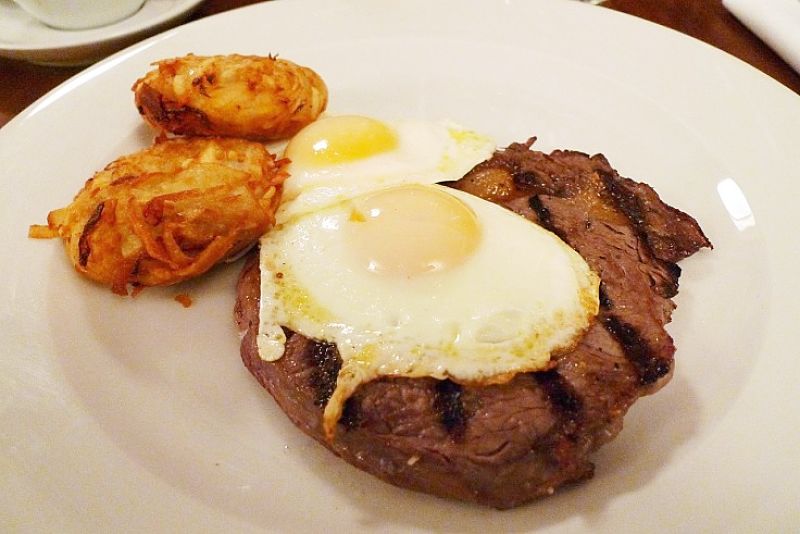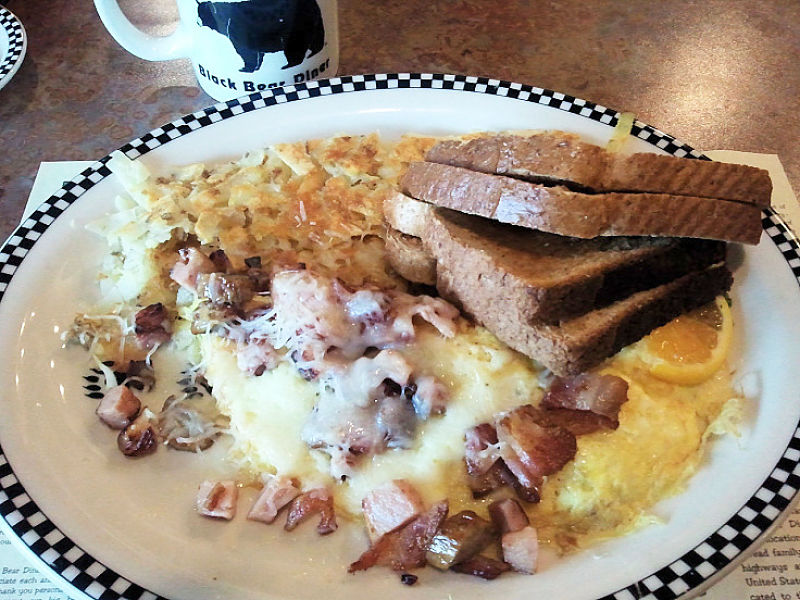TV Chef Meals Unhealthy - High in Calories, Fat, and Low in Fiber
Famous TV chefs such as Jamie Oliver and Nigella Lawson have regular TV programs that demonstrate how to prepare fabulous homemade, whole foods. The presenters have also published a series popular cookery books hat have been best-sellers around the world.
The TV shows and books undoubted influence many people’s diets and food choices. But a new study by a team of researchers in British, published in the renowned British Medical Journal has found that many of their recipes were less healthy than the "ready-made meals" sold at many supermarkets.
The study found that the TV presenter meals contained significantly more fat, saturated fat, energy (calories; kilojoules) and less fiber in a standard serving than the ready-made meals. This was surprising as the ready-made meals, often referred to as TV dinners have been widely condemned as unhealthy, despite having nutrient information published on the packages.
Even worse, none of the 100 prepared meals and the 100 TV presented meals tested, fully complied with recommendations by the World Health Organisation guidelines for avoiding diet related diseases. All the meals tested, from both sources, had excessive levels of fat (especially saturated fat), protein and salt.
The alarming conclusion was that neither the ready meals, nor those prepared from recipes published in books published by the TV chef presenters, met international nutritional standards for a balanced diet.
This article discusses these findings and their implications.
How Healthy and TV Chef Meals in Comparison with Ready-Made Meals?
TV chef programs are very popular throughout the world. They promote home cooking and provide an excellent source of information about ingredients, cooking methods and styles. It is clear that these chefs, through their popular TV programs and their books, influence many peoples’ diets and promote home cooking as an alternative to fast foods and the prepared meals bought from supermarkets. However, apart from the nutritional information provided for some of the recipes in the books, there is little overall nutritional data available for these meals in comparison with prepared meals available from supermarkets.
Rightly or wrongly, intentionally or otherwise, TV chef recipes are often promoted as being healthy, perhaps mostly because they are home cooked. Some hospital trusts in the UK have used TV chef recipes when devising so-called healthy meals for hospital. The general impression is that that meals prepared by TV chefs during broadcasts and in the recipes published in their books are healthy. On the other hand comparison, ready-made meals, sometimes called TV dinners are widely criticised as being unhealthy. Both the major dietary recommendation for the UK government’s Change4Life program and the US ChooseMyPlate initiatives contain advice to avoid frequent consumption of ready-made meals. Yet there has been no detailed study of the nutritional content of ready-made meals compare with World Health Organisation recommendations for healthy diets.
The research study reviewed here compare the nutrition data for a sample of 100 ready-made meals and 100 recipes from the books of popular TV chefs (chosen at random).
Researchers selected recipes from five best-selling, recently published British recipe books: 47 from the author Jamie Oliver; 25 from Nigella Lawson; 21 from Hugh Fearnley-Whittingstall and 7 from Lorraine Pascale. This provided a sample of 100 recipes. The researchers also selected 100 own-brand, ready to eat meals, from major British supermarkets. The criteria used to select the 200 meals were:
- they were designed to be eaten hot
- they were not described as being specifically for special occasions
- they were not breakfast-only meals
- they were not soups
- they contained at variety of macro nutrients (proteins, carbohydrates etc.)
- the recommended serving size was at least 225 g.
For the TV chefs meals, the nutrient composition was based on the raw ingredients stated in the recipes, excluding optional ingredients. For the ready meals nutritional data was obtained from the supermarkets’ websites or the information on the packets.
For each meal nutrition information was collected for:
- Total energy (kJ)
- Protein (g)
- Carbohydrate (g)
- Sugar (g)
- Sodium (mg)
- Fat (g)
- Saturated fat (g)
- Fiber (mg)
Comparison of The Median Nutrient Content for Standard Portions
| Median Content per Portion | TV Chef Recipes | Ready-Made Meals |
|---|---|---|
| Energy (kJ) | 2530 | 2067 |
| Energy (Cal) | 604 | 495 |
| Protein (g) | 37.5 | 27.9 |
| Carbohydrate (g) | 49.5 | 51.1 |
| Sugar (g) | 8.3 | 6.8 |
| Sodium (mg) | 658 | 800 |
| Fat (g) | 27.1 | 17.2 |
| Saturated fat (g) | 9.2 | 6.8 |
| Fibre (g) | 3.3 | 6.5 |
The table above compares the median nutrient composition per portion for the 100 TV chef meals and the 100 Ready-made meals. The median is simply the mid-point, that is half the meals in the sample have higher values and half have lower values.
The table shows that the TV chef meals had significantly more energy (calories), protein, fat, (especially saturated fat than the ready-made meals. The TV chef meals also had significantly less fiber. Many of the differences were quite large. For example there was twice and much fiber in the ready-made meals, and almost twice as much fat. Many people have commented that many TV Chefs appear to liberally drizzle olive oil over most meals during the presentations. The energy content for comparable portions is 25% higher for the TV chef meals.
Comparison of Key Nutrition Measure with WHO Guidelines
| Nutrient | WHO Range | Median TV Chef Meals | Total % within WHO range | Median in Ready-Made Meals | Total % within WHO range |
|---|---|---|---|---|---|
| % energy from Protein | 10 to 15 | 23.8 | 7 | 22.7 | 9 |
| % energy from Carbohydrate | 55 to 75 | 31.6 | 6 | 42.9 | 18 |
| % energy from Sugars | less than 10 | 5.3 | 81 | 5.7 | 83 |
| % energy from Fat | 15 to 30 | 42.2 | 24 | 32.4 | 37 |
| % energy from Saturated fat | less than 10 | 14.9 | 33 | 13.9 | 34 |
| Fibre density (g/MJ) | less than 3.0 | 1.4 | 14 | 3.2 | 56 |
| Sodium density (g/MJ) | less than 0.2 | 0.2 | 36 | 0.4 | 4 |
The next table (shown above) compares the source of energy as well as common measures used to rate healthy foods. These measures are the ratio of fiber to the calories (mega joules) in the food and the sodium density, which is the sodium content expressed as a ratio to the energy content. Also shown are the nutrient values recommended by the World Health Organisation (WHO) for healthy diets. The percentage values shown in the right-hand columns refers to comparison with the WHO guidelines. The major findings were:
- None of the TV Chef recipe or the ready-made meals met ALL of the WHO nutrient guidelines.
- The worst aspects were energy from protein (7-9% within WHO range),energy from carbohydrate (8-18%) within range, and the sodium density (4% within WHO range for ready-made meals). Fiber density was low for the TV Chef meals.
- Generally the percentage of meals that met the WHO guidelines was higher for the ready-made meals for fiber density, energy derived from carbohydrate, and energy derived from fat. The exception was for sodium density where more the ready-made meals exceeded the sodium density guidelines (96% for Ready-made meals versus 64% for the TV Chef meals.
Number of Meals assigned to the Traffic Lights Healthy Food Criteria for TV Chef and Ready-Made Meals
| Macronutrients | Number for TV Chef Recipes | Number for TV Chef Recipes | Number for TV Chef Recipes | Nunmber for Ready-Made Meals | Nunmber for Ready-Made Meals | Nunmber for Ready-Made Meals |
|---|---|---|---|---|---|---|
| Red | Amber | Green | Red | Amber | Green | |
| Sugar | 17 | 0 | 83 | 11 | 0 | 89 |
| Fat | 68 | 17 | 15 | 37 | 39 | 24 |
| Saturated fat | 71 | 1 | 28 | 56 | 1 | 43 |
| Salt | 31 | 28 | 41 | 30 | 60 | 10 |
| Totals | 187 | 46 | 167 | 134 | 100 | 166 |
The table above compares shows the number of each traffic light color assigned to the meals in each group according to FSA labelling criteria; Red for high, Amber for moderate and Green for Low. This scheme is used voluntarily in the UK, but has been blocked by food processors in Australia and USA.
The general findings in relation to this classification were:
- The TV Chef recipes had more red
- The ready-made meals had more amber,
- The green classification was almost equal between the groups.
- The most common color was red for the TV Chef recipes, and Green for the ready-made meals.
Conclusion
Published TV Chef recipes, which often don't have nutritional information, and ready-made meals sold in supermarkets chains, mostly did not meet the WHO healthy food guidelines. These meals were higher in fat, saturated fat, protein and sodium, and were lower in fiber, than the WHO recommendations for healthy meals.
Meals based on TV Chef recipes were generally less healthy than Ready-Made meals, despite various health authorities claiming ready-made meals were less healthy than home cooked meals. The TV Chef recipes contained significantly more protein, energy (Calories), fat, and saturated fat, protein and significantly less fiber. However,only 4% of the ready-made meals met the WHO recommendation for sodium, and 35% of the TV Chef recipes, despite efforts to reduce dietary intake of salt.
Given that many people believe that the TV Chef recipes are healthy home cooked meals, these findings have profound implications for the World-Wide battle again obesity. A major study in the UK on the causes of obesity concluded that most people are over-weight or obese because they passively eat too much. The meals that people eat 'normally' are simply too rich and contain too any calories, and too much fat. The ingredients available in the West have been highly processed since the 1970s when the obesity epidemic started.
This study has shown that people following the example of the TV Chefs for home cooked meals are likely to consume too many calories and too much fat. At the very least the books published by the TV Chefs should contain detailed nutrition information. Similarly people watching these programs should be advised that the meals are not necessarily healthy, despite being home cooked. Perhaps the presenters of these programs should be encouraged to cook healthier meals.


